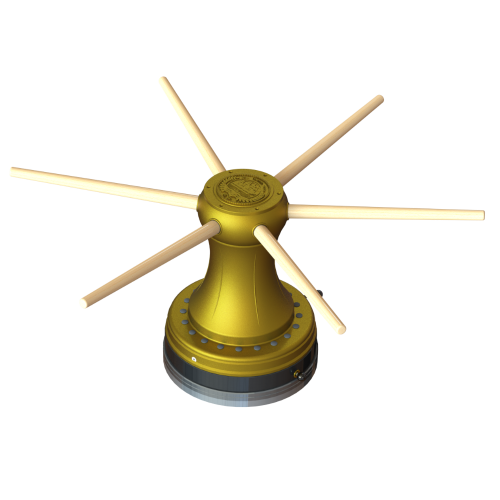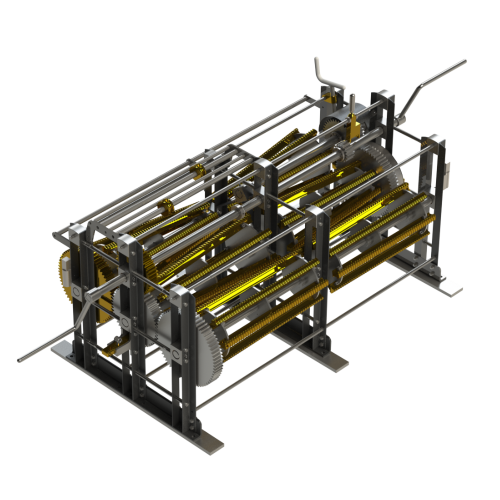Tallship Equipment
Large classic sailing vessles such as schooners and barques are impressive ships, even in present day, and remain populair around the world for their looks and mighty appearance, and they are also in use with navies around the globe as training vessles. Therefore it is not surprising that new ones are built every year, and there is still demand for parts because of older ships being remodeled. Slo-Rid b.v. uses its modern production equipment and design techniques to manufacture tallship equipment with classic looks, while using modern tolerances and providing present day reliablity for clippers and it’s crews. The “Stad Amsterdam”, a modern clipper based on a namesake which was built in 1854, is among the ships that are equipped with our winches and capstans, and Slo-Rid b.v. is proud to have supplied miscellaneous other parts for this ship that has been the flagship of the famous SAIL Amsterdam in-parade in 2000, 2005, 2010 and 2015.
Capstans

Working principal
Capstans are vertically rotating winches that are used on large sailing vessles to haul ropes. Historically, capstans used to be operated by the crew on a ship and such devices have been reported to be in use since the 14th century. Later models even had their axles going below deck, so two crews were able to operate the device at once. Modern capstans are powered electrically.
Slo-Rid capstans
Modern manufacturing techniques and materials, while maintaining the classic looks that that suit a tallship, a Slo-Rid capstan it truly the best of both worlds. The electric motor is integrated into the capstan, which result in easy installment and best in its class weatherproofing. A planetary gear system ensures smooth operation and that you will have plenty of torque at your disposal when you need it most. Slo-Rid capstans are almost mounted Flat-on-the-deck, making them ideal for retrofitting and allowing them to be installed without having to do any major modifications to the deck of a tallship. A joystick is used for controlling the capstan, which makes it easy and intuitive to operate one.
Winches

Some history…
Our brace winches are constructed according the design of Captain John Charles Barron Jarvis (1837 – 1935). Captain Jarvis was a Scotsman, who, by several inventions, tried to improve the equipment of square-rigged ships regarding safety and manning reduction. His Jarvis winches, however, have only been applied extensively on the large windjammers of German owners.
Working principal
During the bracing operation there is a difference in the length of wire to be taken in and the lenth to be paid out. The essence is that in a Jarvis winch the lenght difference is accommodated in the tapering of the wire drums. In principle more wire will have to be taken in than paid out. This depends on the length of the yards and the steepness of the brace. The steeper the brace, the shallower the drum is.
Slo-Rid winches
Slo-Rid Jarvis winches are constructed with high quality components and materials that have proven to be reliable in the harsh conditions of the high seas. Hence, the gears of our Jarvis winches are made out of brass or stainless steel, while the drums are made out of brass. All other components of the winch are constructed out of stainless steel. Special bearings are used in our Jarvis winches to ensure performance after being struck by lightning, or in moist environments.

